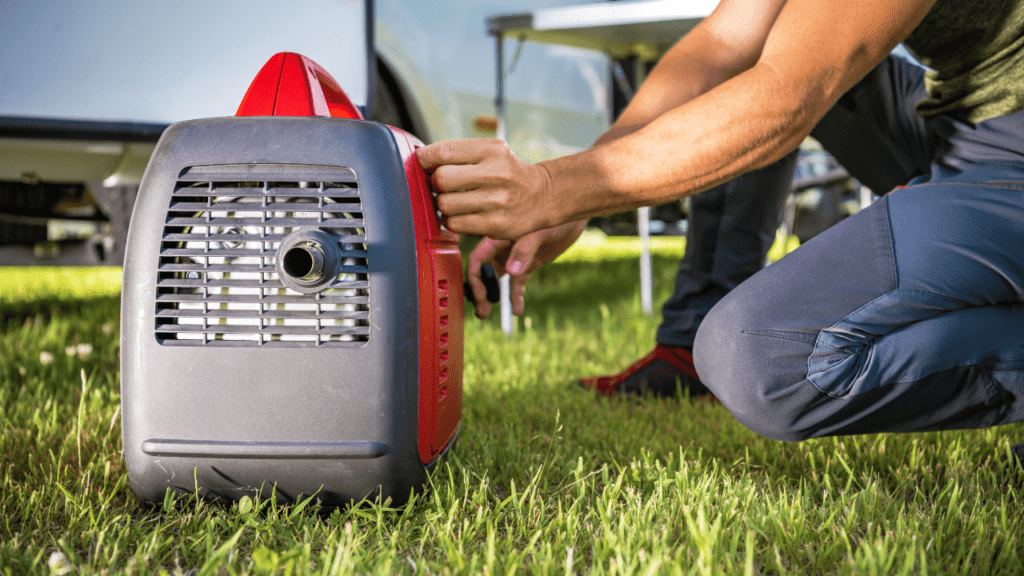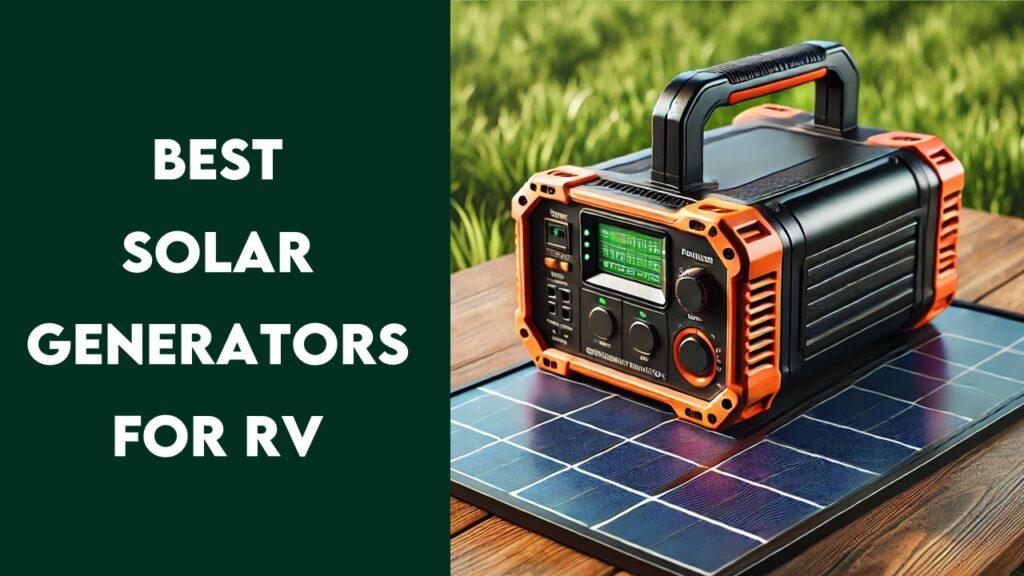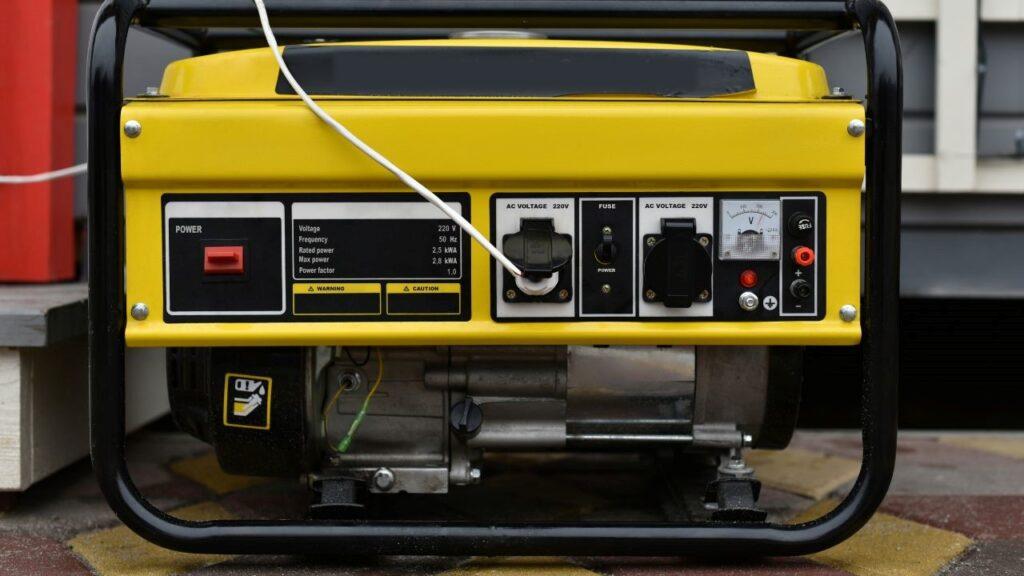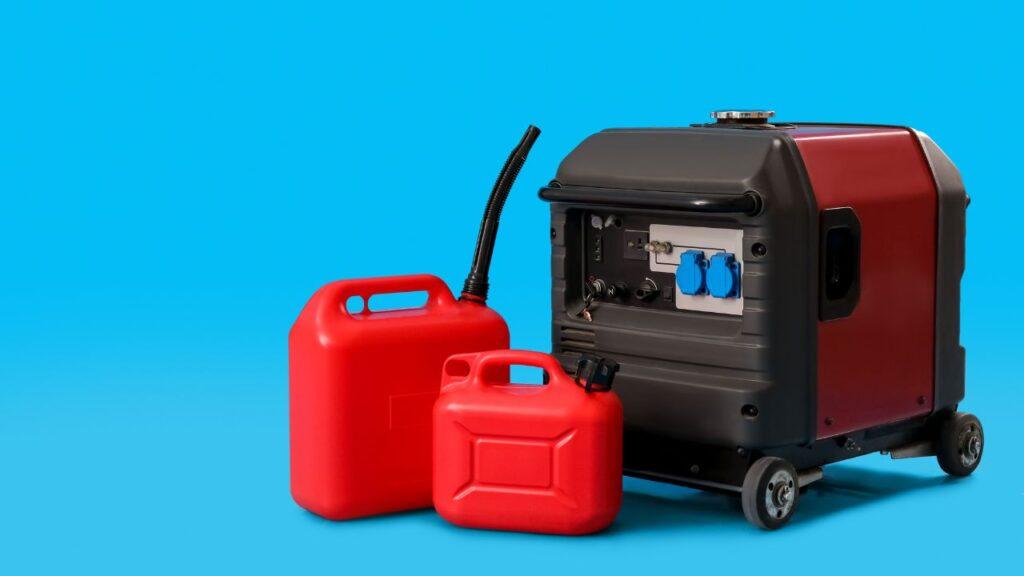
Ever wondered why keeping your electric start generator’s battery in tip-top shape is so important? Well, it’s like making sure your favorite toy has fresh batteries, so it’s always ready to play when you are! In this article, we’ll dive into the world of electric start generators and show you how to keep their batteries healthy and happy. Whether it’s a chilly winter night or a hot summer day, you’ll want your generator ready to light up your home or power your adventures without a hitch. So, let’s get started on this journey to learn how to maintain battery health in electric start generators!
A Glimpse at Your Generator’s Battery
Alright, let’s talk about what keeps your electric start generator ready to go—the battery. Just like a good breakfast starts your day right, a healthy battery starts your generator for emergency home backup or outdoors right. We’ll explore what types of batteries there are and how they make your generator do its job. This isn’t just handy; it’s crucial for making sure you’re never left in the dark.
Types of Batteries Used in Electric Start Generators
First up, it’s good to know what’s out there so you can pick the best battery for your generator. Here’s the lowdown:
- Lead-acid batteries: These are the old reliable of the battery world. They’re pretty budget-friendly and get the job done, but they do need a bit of TLC to keep them going strong.
- Lithium-ion batteries: These are the high-tech cousins in the battery family. They’re lighter, can last longer without a fuss, and though they might hit your wallet a bit harder, they’re pretty much ‘set it and forget it’.
Each kind has its perks and quirks. Choosing the right one means balancing cost, maintenance, and how often you’ll be using your generator.
How Batteries Work in Electric Start Generators
Batteries aren’t just there to help start the engine; they’re part of the team. Here’s what they do:
- Kickstarting the engine: Just like the spark plugs in a car, the battery gets the engine going.
- Powering up extras: If your generator has any bells and whistles like displays or extra outlets, the battery keeps them running too.
Getting to know how your generator’s battery works isn’t just about keeping the lights on; it’s about getting the most out of it. This means less stress and more power when you need it.
Understanding your generator’s battery helps you make smarter choices about its care, ensuring it’s always ready for action. Next up, we’ll dive into how to keep that battery in tip-top shape.
Regular Maintenance Practices
Keeping your generator’s battery in great shape isn’t just about fixing things when they go wrong—it’s about preventing problems before they start. Just like brushing your teeth helps prevent cavities, regular maintenance keeps your battery healthy. Let’s walk through some easy steps to help your generator’s battery last longer and work better.
Checking Battery Voltage and State of Charge
It’s like checking the fuel gauge on your car; you want to know how much ‘juice’ your battery has. Here’s what to do:
- Use a multimeter: This handy tool tells you the voltage level, which gives you a clear picture of your battery’s health.
- Understand the readings: A healthy battery should read around 12.6 volts when fully charged. If it’s below 12 volts, that’s like running on empty.
Regular checks can catch problems early, saving you from a generator that won’t start just when you need it most.
Cleaning Battery Terminals
A clean connection is key to smooth operation. It’s like ensuring the wires in your gaming console are properly plugged in for the best performance.
- Safety first: Always disconnect the battery before cleaning.
- Wipe and scrub: Use a brush and a baking soda-water mixture to scrub off any corrosion. This keeps the terminals conductive and efficient.
Keeping the terminals clean ensures your battery transfers power effectively, so your generator starts every time.
Ensuring Proper Battery Storage
When you’re not using your generator, where and how you store the battery can make a big difference.
- Keep it cool and dry: Extreme temperatures can drain battery life, so a garage or basement is ideal.
- Stay charged: If possible, keep the battery on a trickle charger to maintain its charge without overdoing it.
Proper storage extends your battery’s life and ensures it’s ready to go when you pull your generator out of hibernation. Regular maintenance might seem like a chore, but it’s the secret to a reliable, ready-to-roll generator.
Charging Strategies for Maximum Battery Life
Charging your generator’s battery correctly is like feeding it the best diet for long life and strong performance. You wouldn’t fuel your body with just any food right before a big race; similarly, how you charge your battery greatly affects its longevity and reliability. Let’s explore some top tips to keep your battery fully charged and ready to perform.
Optimal Charging Practices
Just like you need a good night’s sleep to recharge, your generator’s battery needs the right amount of charge to stay healthy. Here’s how to do it right:
- Regular charging: Don’t let your battery sit discharged for too long. It’s best to charge it soon after use.
- Avoid overcharging: Just as overeating can be harmful, overcharging your battery can reduce its lifespan. Use a charger that automatically stops when the battery is full.
Following these guidelines can help ensure your battery always has enough power without being stressed by overcharging.
Using a Smart Charger
Using a smart charger is like having a personal trainer for your battery—it optimizes the charge based on the battery’s condition.
- Automated charging: Smart chargers adjust the charge rate to avoid overcharging, which can be as harmful as not charging at all.
- Maintenance mode: Some smart chargers have a maintenance or trickle charge setting that keeps your battery just right when it’s not in use.
Investing in a smart charger can be a game-changer for extending the life of your battery, making sure it’s always ready when disaster strikes or you just need to power up.
Proper charging isn’t just a good practice—it’s crucial for keeping your generator reliable in emergencies or for everyday use.
Troubleshooting Common Battery Issues
Even with the best care, sometimes batteries act up, just like sometimes your computer glitches when you least expect it. Knowing how to pinpoint and fix these issues can save you time and headaches. Let’s break down some common battery troubles and how to solve them, so you’re never left wondering what to do when your generator doesn’t start.
Signs of Battery Failure
Just like you know you’re sick when you have a cough or a fever, there are signs that show your battery might be in trouble. Here’s what to watch for:
- Difficulty starting the generator: If it takes several tries to get going, your battery might be crying for help.
- Dim lights or weak output: This can mean your battery isn’t holding a charge as well as it should.
Catching these signs early can be the key to fixing your battery before it gives up completely.
What to Do If Your Battery Isn’t Charging
It’s frustrating when you plug in your phone all night and it’s still not charged in the morning, right? The same can happen with your generator’s battery. Here’s how to troubleshoot:
- Check the connections: Loose or corroded connections can prevent charging. Make sure everything is tight and clean.
- Test the charger: Sometimes the problem isn’t your battery; it’s the charger. Test it with another battery to see if it’s working properly.
Knowing how to troubleshoot these issues yourself can get your generator back in action faster and may save you a trip to the repair shop.
Troubleshooting your generator’s battery doesn’t have to be a mystery. With these tips, you can figure out what’s wrong and how to fix it, keeping your generator reliable for when you really need it.
Advanced Tips for Prolonging Battery Life
Now that we’ve tackled the basics, let’s step up your game with some expert tricks to extend your generator’s battery life. Think of these tips like secret hacks that can help your battery run smoother for longer, ensuring your generator is always ready when you need it.
Periodic Equalization Charges for Lead-Acid Batteries
Some batteries need a little extra TLC to keep them running at their best. Here’s how to give lead-acid types a boost:
- What is it: This special charging process helps balance the battery cells and prevent acid stratification, which is when the acid concentration varies across the battery.
- How to do it safely: Follow your battery charger’s manual for an equalization setting, and make sure to do it in a well-ventilated area to avoid any buildup of dangerous gases.
Regularly performing an equalization charge can rejuvenate your lead-acid batteries and help them perform like new.
Utilizing Battery Management Systems
Just like you might use a fitness tracker to monitor your health, a battery management system (BMS) can keep an eye on your battery’s health. Here’s what a BMS can do:
- Monitors battery health: It keeps tabs on your battery’s voltage, current, temperature, and more to ensure everything is working as it should.
- Automatically adjusts settings: If something’s off, the BMS can adjust the charging rate or even shut down the system to prevent damage.
Using a BMS can take a lot of the guesswork out of maintaining your battery, making it easier to ensure it lasts as long as possible.
With these advanced tips, your generator’s battery can reach its full potential, saving you money and trouble down the line. Keeping your battery in peak condition means you can rely on your generator whenever you need it, whether it’s during a power outage or for an outdoor event.
Wrapping It Up!
Alright, we’ve covered a lot today about keeping your generator’s battery in top shape! From choosing the right type to giving it the care it deserves, it’s all about making sure your generator is ready to go whenever you need it. Remember, treating your battery well is like looking after a good friend—it’ll be there for you when you really need it.
Regular checks, clean connections, and smart charging are your best bets for a long-lasting battery. And if things get a bit tricky, don’t worry. With the troubleshooting tips we talked about, you’ll know exactly what to do. So, keep up with these simple steps, and you’ll turn into a battery care whiz in no time. Your generator’s battery is the heart of the show—keep it healthy, and it’ll power up your needs smoothly and reliably. Let’s keep those lights on and your adventures powered!
Related FAQs
How Long Does A Generator Battery Last?
Typically, a generator battery lasts between 3 to 5 years, but proper maintenance can extend its lifespan.
What Type Of Battery Is Best For Electric Start Generators?
Lead-acid batteries are commonly used due to their cost-effectiveness and reliability, but lithium-ion batteries are gaining popularity for their longevity and maintenance ease.
Can I Use A Car Battery In My Electric Start Generator?
While car batteries can be used, it’s best to use a battery specifically designed for generators to ensure optimal performance and safety.
How Often Should I Charge My Generator’s Battery?
It’s ideal to charge your generator’s battery at least once every three months to keep it in good working condition.
What Are The Signs Of A Failing Generator Battery?
Signs include difficulty in starting the generator, weak cranking power, and dimming lights on the generator’s panel.
At our core, we’re a group of passionate generator, inverter, solar energy, battery enthusiasts. We dive deep into the world of tech, especially when it’s about powering your home, RV or outdoors. We try to provide as much value to the readers with our information and how to blog articles as possible. For affiliate articles our honest and transparent reviews of essential tech products are rooted in real-world experience. We take great satisfaction in offering unbiased evaluations, ensuring that you can make informed decisions when investing in your desired techs.




